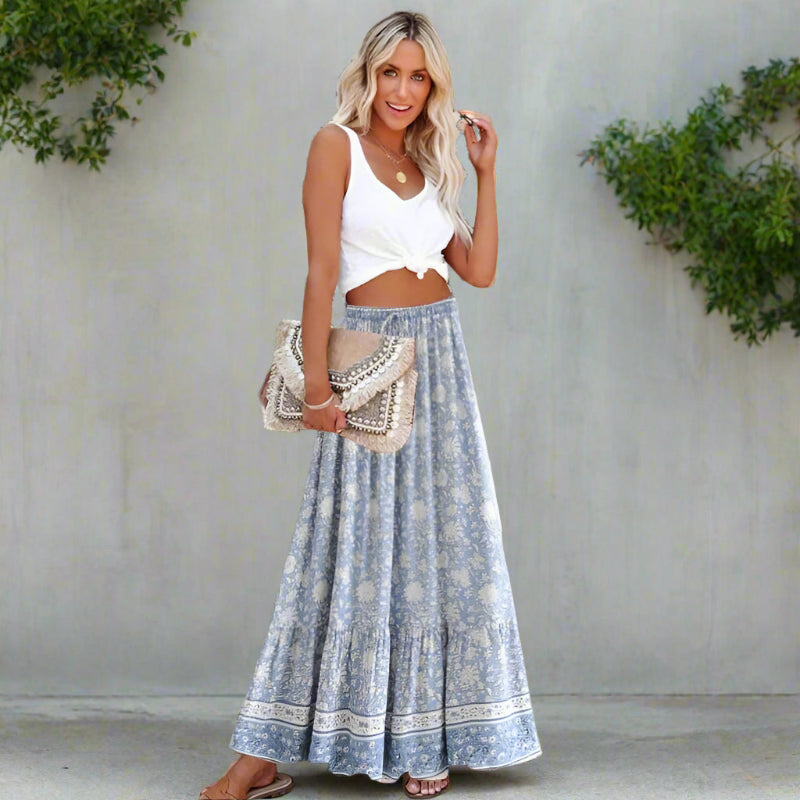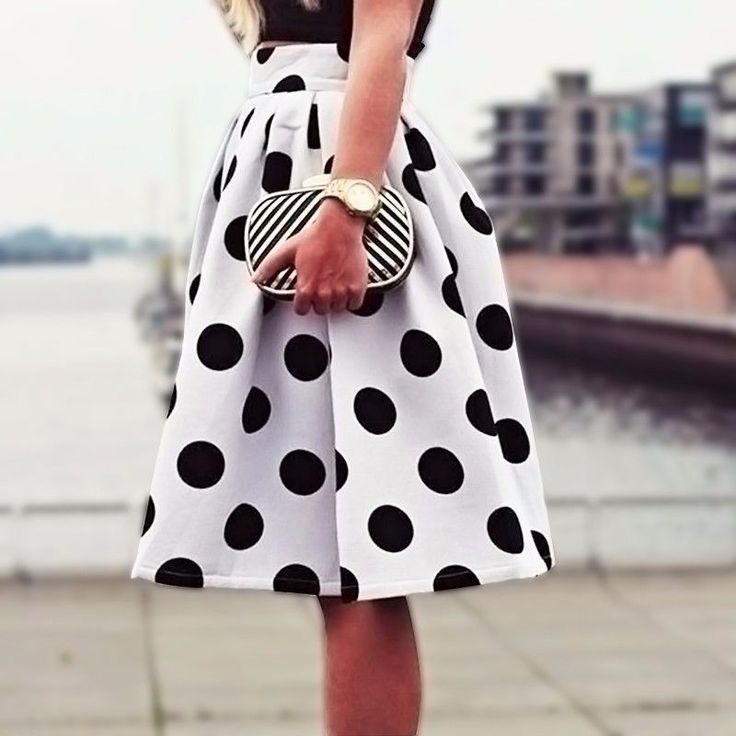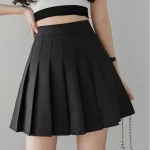Introduction to Skirt Sizing
Skirt measurements! Navigating skirt sizing can be tricky. Unlike other clothing items, skirts require precise fitting to ensure comfort and style. Skirt measurements are key to finding that perfect fit. Standard sizing often differs between brands. This means that a size 10 in one brand could be a size 12 in another. To avoid guesswork and returns, knowing how to measure for a skirt is essential.

Skirts come in various types, each with distinct sizing needs. Pencil skirts, for example, are form-fitting and need accurate hip measurements. A-line skirts, on the other hand, might rely more on waist measurements. Length is another important factor. It can affect both the style and appropriateness of a skirt for different settings.
Before we dive into obtaining the right skirt measurements, let’s cover the basics. We’ll need some essential tools and a clear understanding of where to measure. The goal is to help you measure your waist, hips, and desired skirt length correctly. With these measures, you’ll confidently pick the right size or tailor custom skirts to your figure.
Essential Tools for Measuring
To get accurate skirt measurements, you’ll need the right tools. Start simple with a soft measuring tape. This flexible tape will follow the contours of your body for a precise measure. Ensure the tape is neither too loose nor too tight. It should lay flat against your skin without digging in.
A notepad and a pen are essential for recording your measurements. Write them down as soon as you take them. This avoids forgetting or mixing them up. A full-length mirror will also help. It allows you to see if the tape is in the right place while measuring.
For the most accurate results, wear form-fitting clothing. Bulky clothes can add inches to your measurements. If you can, ask a friend to help. They can ensure the tape is level all the way around. With these tools ready, you’ll be set to get your skirt measurements accurately.
Step-by-Step Guide to Measuring Your Waist
Measuring your waist for skirt measurements is simple but requires precision. Here’s how to do it in easy steps:
- Locate Your Natural Waist: Stand up straight and bend to one side. The crease that forms indicates your natural waist. It’s the narrowest part of your torso, often just above the belly button.
- Wrap the Measuring Tape: Take the soft measuring tape you’ve gathered. Wrap it around your natural waistline. Ensure the tape is parallel to the floor for accuracy.
- Keep the Tape Snug: The tape should be snug but not tight. You should be able to slip a finger between the tape and your skin.
- Breathe Normally: Avoid holding your breath. Breathe normally to get a measurement that will be comfortable all day.
- Record the Measurement: Look in the full-length mirror to check the tape position. Once sure, record the number at the point where the end of the tape meets the rest.
- Double-Check: To be certain, measure again. It’s not uncommon for first measurements to be slightly off.
Follow these steps, and you’ll have an accurate waist measurement for your skirt. Remember, a proper fit is crucial for comfort and style.
How to Measure Your Hips Accurately
Getting the right hip measurement is vital for a snug skirt fit. Begin by finding the widest part of your hips. It’s usually about 7 to 9 inches below your natural waist. Stand with your feet together for a good base.
- Stand Straight: Keep your back and legs straight. Avoid bending or leaning.
- Wrap the Tape: Circle the tape around your hips at their widest point. Ensure it’s horizontal and snug.
- Relax Your Muscles: Just like with the waist, stay relaxed. Breathe normally. This prevents a tight measure.
- Check the Tape Position: Use a mirror to confirm the tape is even all around. Adjust if needed.
- Read the Measurement: While standing straight, read where the tape overlaps. Write this number down right away.
- Repeat for Consistency: Measure twice or more to ensure accuracy. Multiple checks avoid errors.
By following these pointers, your skirt measurements should reflect the perfect hip fit. With your waist and hips measured, you’re halfway to finding your ideal skirt size. Stay relaxed and precise, and you’ll secure the numbers you need for that perfect skirt fit.

Determining Skirt Length
Once you have your waist and hip skirt measurements, the next step is to determine the right skirt length for you. The length of a skirt can dramatically alter its look and the way it fits into your wardrobe, so getting this right is as important as the waist and hip measurements.
To start, decide on the skirt style you’re aiming for. Skirts can range from mini to midi to maxi, with many variations in between. Your choice will depend on personal preference, the occasion for wearing the skirt, and the season.
Here’s how to measure skirt length:
- Choose the Measuring Point: Your skirt length will start from either the natural waist or the point where your intended waistband will sit. Stand up straight to find this spot.
- Decide on the Length: Think about where you want the skirt to end. Above the knee, at the knee, midi-length, or all the way to the ankle are common options.
- Measure Down: Hold one end of the measuring tape at your chosen starting point. Let the other end fall down to your desired skirt hemline.
- Keep the Tape Straight: Ensure the measuring tape runs straight down the body line. It should not wrap around your hips or waist.
- Record the Number: Look in the mirror to make sure the tape is straight, and then note down the length.
- Double-Check: Like with the waist and hips measurements, you should measure the length twice to ensure accuracy.
When considering skirt length, always think about your height, body shape, and the heels you might wear with the skirt. These can all influence the ideal length for your body and style. With the correct length figured out, you’ll be able to choose or alter a skirt that flatters your figure and meets your needs.

Tips for Measuring Skirt Hemlines
Measuring skirt hemlines correctly can make or break the look of your skirt. Here are simple tips to guide you:
- Stand on a Flat Surface: Make sure you stand on a hard, flat surface. This will keep your posture straight and consistent.
- Wear Your Shoes: Put on the shoes you plan to wear with the skirt. This will affect the final hemline position.
- Keep the Tape Level: When measuring the hemline, ensure the tape is parallel to the ground. This helps avoid an uneven skirt hem.
- Ask for Help: Having someone else measure for you is ideal. They can see the hemline from a better angle.
- Use Pins: Pin the fabric at the desired length. Step back and check its appearance in the mirror.
- Mark the Length: If alone, make a small mark with fabric chalk at the hemline point on each side, then connect the dots.
- Measure from the Waist: Always measure the hemline starting from the waist down to where you want the skirt to end.
- Consider Movement: Remember that moving around can shift the skirt. Aim for a hemline that accommodates movement.
- Double-Check Your Work: Re-measure the hemline after making any adjustments to confirm it’s right.
These tips for skirt measurements will help you achieve a hemline that complements your overall look and intentions for the skirt.
Understanding Different Skirt Styles and Fits
When it comes to skirts, each style has a unique fit and may require different skirt measurements. Understanding these differences is key to ensuring that you select the correct size or alter a skirt to suit your shape. Here are some popular skirt styles and their typical fitting needs:
- Pencil Skirts: These are tailored to fit close to the body. Pay extra attention to hip measurements for a snug, flattering fit.
- A-Line Skirts: They flare out from the waist. Focus on accurate waist measurements for a comfortable fit.
- Pleated Skirts: Ensure waist measurements are precise, as the fullness of the skirt can hide other fitting issues.
- Maxi Skirts: Length is crucial here. Measure for a hemline that works with your height and the shoes you’ll wear.
- Circle Skirts: These should fit well at the waist, as they are designed to fall naturally around the hips.
- Wrap Skirts: They offer some flexibility. Adjust the waist for a custom fit.
- Mini Skirts: Both waist and hip measurements matter, as well as the length, to ensure appropriate coverage and style.
By understanding the fit specific to each skirt style, you can avoid common issues, like a waistband that’s too tight or a skirt that’s too loose around the hips. With correct measurements, you’ll enjoy the look and comfort of your skirts.
Common Measurement Mistakes to Avoid
When taking your skirt measurements, it’s easy to make mistakes that can lead to an ill-fitting garment. Here are some common pitfalls to watch out for to ensure the best fit possible:
- Not Measuring at the Right Points: It’s crucial to measure exactly where the skirt will sit on your body. Don’t guess the spot; find your natural waist or the point where your skirt’s waistband will rest.
- Using a Rigid Tape Measure: Rigid tapes won’t curve around your body like a soft measuring tape, leading to inaccurate numbers. Always use a soft tape measure.
- Keeping the Tape Too Tight or Loose: The tape should fit snugly, allowing a finger’s space in between. Too tight, and you’ll have a skirt that pinches; too loose, and it’ll sag.
- Ignoring Posture: Slouching or sucking in your stomach will skew results. Stand straight, relax, and breathe normally while measuring.
- Wearing Bulky Clothes: Thick layers add extra inches. Wear thin clothing to avoid adding length inadvertently.
- Failing to Double-Check: Always measure twice. The first try can often be slightly off, and accuracy is vital for that perfect skirt fit.
- Forgetting to Consider Movement: Remember, you’ll move in the skirt. Don’t measure too tightly; allow some space for comfort and movement.
- Overlooking the Shoe Factor: The height of your shoes can change the desired length of your skirt, especially for maxi styles. Measure while wearing the shoes you plan to pair with the skirt.
By avoiding these common mistakes in skirt measurements, you’re sure to have a skirt that fits well and feels comfortable no matter the occasion.


